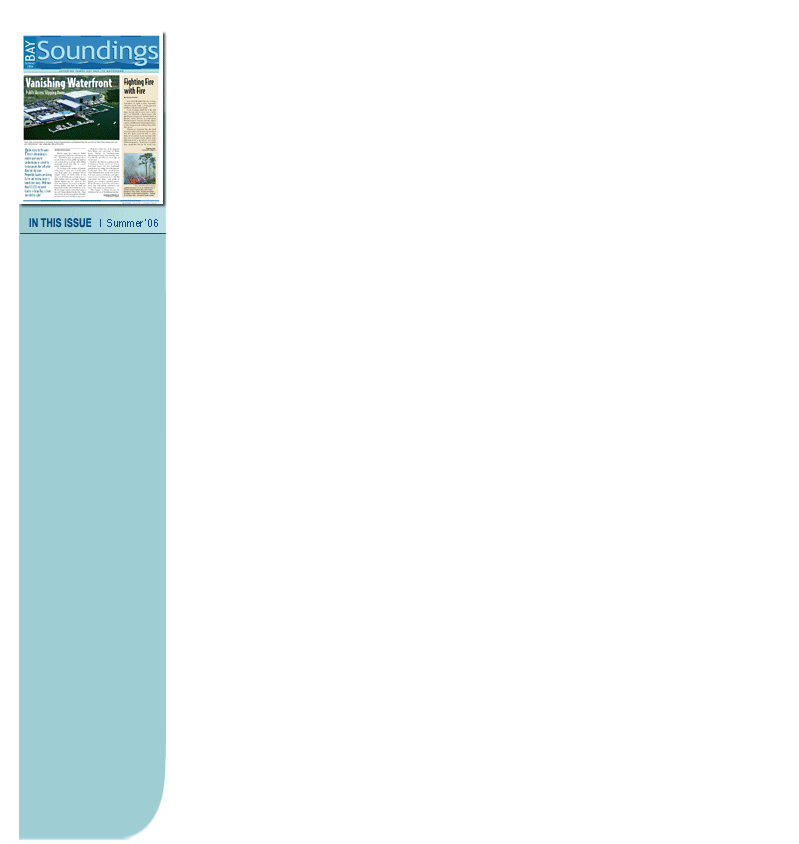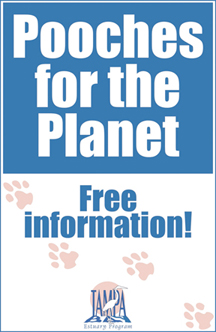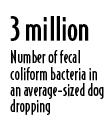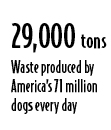

 |
||||||
 |
||||||
Scoop that Poop! Estuary Program Targets Animal Waste
If people saw 250,000 pounds of raw sewage dumped into Tampa Bay every day, it probably wouldn’t happen month in and month out. But that’s pretty much what occurs when an estimated half-pound of poop from each of the region’s approximately 500,000 dogs washes into storm drains from parks, sidewalks and yards.
 |
“So many of us have pets and so many of our favorite parks are located near the bay or rivers that the potential impacts are staggering,” says Nanette Holland, public outreach coordinator for the Tampa Bay Estuary Program. In fact, pet waste has become such an important concern that a new action plan in the program’s updated management plan addresses it, calling for increased research and educational initiatives.
While research on the impact of “doggy do” in Tampa Bay is just beginning, national reports reveal that animal waste may contribute up to 95% of the fecal coliform bacteria in urban stormwater. Two or three days worth of droppings from just 100 dogs in a 20-square-mile watershed could contribute enough bacteria to temporarily close a coastal bay to swimming and shellfishing. And bacterial source tracking in a watershed near Seattle shows that nearly 20% of the bacteria that could be matched with host animals came from dogs.
Along with high levels of nutrients, animal waste may contain pathogens that can infect humans. Organisms such as Cryptosporidium, Giardia lamblia and Salmonella can induce symptoms ranging from skin sores to chest pain. E. coli causes diarrhea and abdominal gas and some particularly virulent strains can cause serious illness and fatalities. Cryptosporidium, a protozoan that is highly resistant to chlorine, causes gastrointestinal illness in healthy individuals or severe illness in people with weakened immune systems.
Clean Yards, Clean Waters, Clean Shoes
Although almost every city and county has laws requiring that owners clean up behind their pooches, they’re seldom enforced even in waterfront communities. Instead, educational initiatives focus on making sure dog owners understand they’re part of a very large problem. “Most people don’t stop and think about how their pet contributes to the cumulative impact – and they have never seen the link between dog waste, public health and water quality,” Holland notes.
 |
A pilot program to track the impact of educational efforts is underway in a small neighborhood park near Holland’s home in South Seminole Heights. Using a hand-held GPS (Global Position System), Holland mapped 83 piles of poop along pathways at the park bordering the Hillsborough River earlier this summer. Beginning in August and running through February, she’ll set up an information station in the park once a month to hand out fact sheets on animal waste along with refrigerator magnets and doggie clean-up bags in a dispenser shaped like a fire hydrant that attaches to the dog’s leash.
“I’ll get back out with the GPS every month to see if it’s making a difference,” she said. “We hope that there will be less dog poop in the park once people understand the magnitude of the problem and the fact that their dog is part of that problem.”
The Pinellas County Parks & Recreation Department, with funding from a TBEP mini-grant specifically targeted toward animal waste, is creating signage and purchasing additional pooper scooper bags for its PAWS playgrounds, including the dog park on Fort DeSoto Beach.
“We’ll present it as a ‘why’ you should clean up after your dog, not as a ‘you must’ do it,” notes Debbie Chayet, grants specialist for the parks department. “What’s happening now is that other dog park users encourage compliance and we’re hoping that increases when the signs go up.”
 |
Holland and Chayet also hope that their message strikes closer to home. “It’s not just parks, it’s all the poop in backyards across the region,” Holland said. “Just like fertilizers and chemicals, residue from dog poop can eventually end up in Tampa Bay.”
In a best-case scenario, poop is scooped and then flushed down the toilet where it can be treated correctly, but bagging waste and putting it in the trash also is a good option, Holland said. The worst-case scenario is disposing of it in storm drains that often connect directly to streams, rivers or the bay without any treatment at all.
In Key West, where bacterial contamination occasionally closes the beaches that drive the island’s economy and nutrients are destroying one of the hemisphere’s only living coral reefs, strict enforcement of the law hasn’t been as effective as peer pressure and education. “You would be surprised at the names people call my code enforcement officers when they approach someone with a dog,” says David Fernandez, director of utilities. “And it’s not useful to enforce the law if you don’t have the political will to back it up.”
Most residents know that animal waste affects the beaches and the reef but many are in denial about their pets, he adds. “They say, ‘it can’t be my dog -- he sleeps with me, he doesn’t have germs.’ ”
Waste Not, Want Not?
Could your pooch help power your house?
In San Francisco, where multiple recycling programs help divert nearly two-thirds of household garbage from landfills, dog waste now makes up about 3.8% of waste stream. A pilot program in one of the city’s busiest dog parks will collect poop in biodegradable bags and run it through a methane digester, a process similar to composting. The digester produces methane gas that can be used to power machinery than runs on natural gas.
A ton of pet waste could produce 50 gallons of diesel-equivalent fuel – enough to heat a house in New England for two weeks, consultants estimate. The real value of the program, however, is removing a recyclable product from the wastestream, according to city officials.